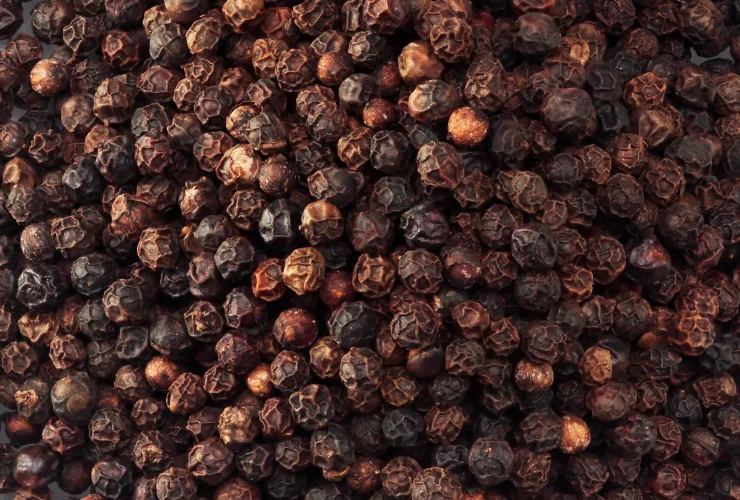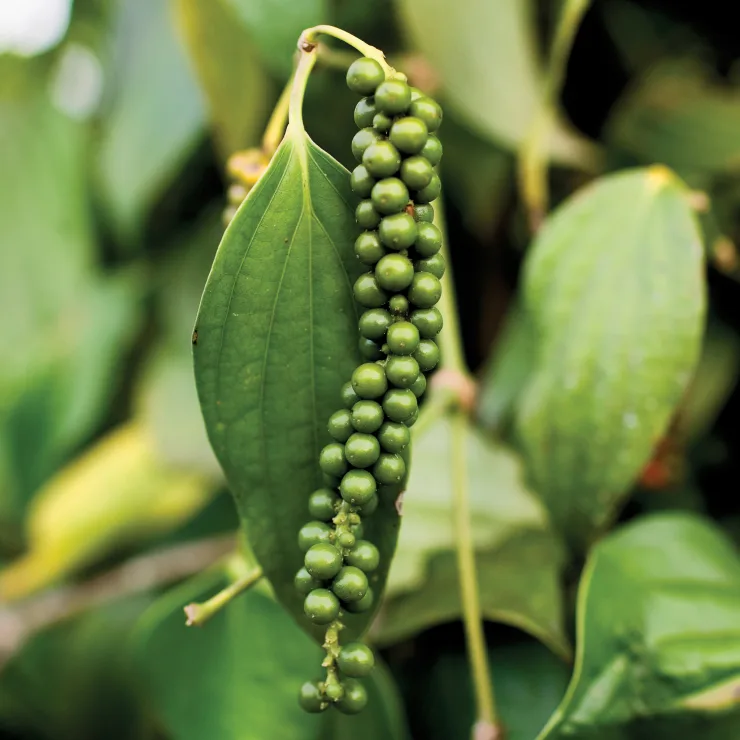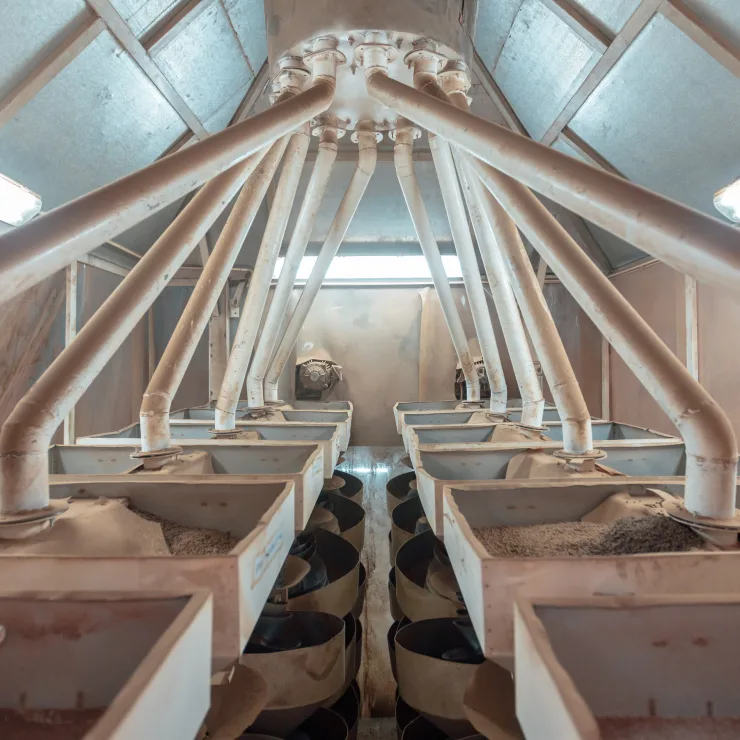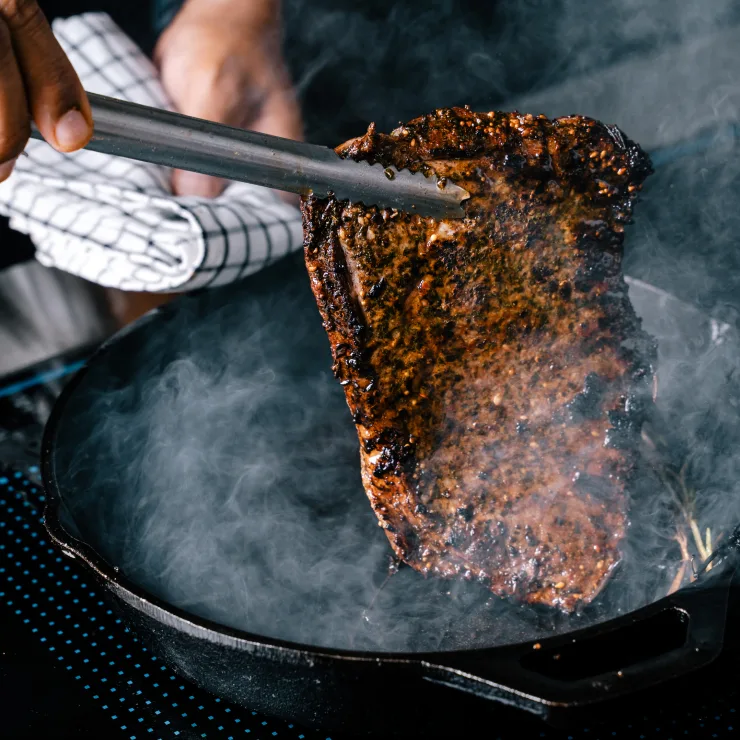Collaboration
Let's put our minds behind something special. Delight consumers, grow businesses and make real change for people and the planet - by creating together.
Nothing adds that distinctive kick to sauces, dressings and rubs quite like pepper—each grain a miniature gem releasing a fiery warmth. No wonder it's known (and loved) as ‘black gold’.
As the world’s largest fully-integrated pepper provider, we know what it takes to make truly great pepper. Such as our farming methods, cutting-edge processing and commitment to traceability and sustainability within our supply chain. Not to mention our direct, on-site sourcing managed by our pepper experts—and supported by estates in both Vietnam and Brazil. Meaning you get only the best ingredient and supply chain, from the field to your factory.

The most traded spice in the world, black pepper is used to flavor a variety of applications. The unripe berries of the pepper plant are picked when turning yellow and immediately dried after harvest with the skin on. As it dries, enzymes in the berries cause the skin to turn black and wrinkly.
A milder form of pepper, with a lightly fermented aroma and taste, white pepper is grown on the same vine as black pepper. However, white pepper is picked ripe (black pepper is picked when unripe) and processed to remove the outer skin, leaving behind a smooth white finish on the berry. White pepper tastes bright and sharp and slightly more herbaceous than black pepper. Thanks to our world-class pepper processing facilities in Vietnam, we have grinding capabilities to match customer specifications.

These black pepper kernels work perfectly when you want to showcase the entire spice. We’re a leading whole peppercorn supplier for premium pickle brines, marinades and vinaigrettes.
Dressings
Sauces and condiments
Marinades
Rubs and seasoning
Processing
At ofi we're redefining pepper production with pioneering work in sustainability and technology.

Sustainability
ofi’s premium pepper is grown on two pioneering sister estates—one in central Vietnam, the other on Brazil’s coast—offering full traceability from seed to harvest.
Full traceability using our mobile app, allowing direct farmer sales to ofi
Ongoing farmer training in pest management, organic methods, and regenerative agriculture
Our activities help regenerate land in Vietnam left damaged by war, by growing sustainable pepper on areas cleared of unexploded ordnances
We protect soil by allowing natural ground cover between plants, prevents erosion, and boosts biodiversity
We plant 40 hectares of eucalyptus to support reforestation and offset carbon emissions

#
We are the world's largest fully integrated pepper supplier*
acres
of forest trees we’ve planted to support farms and local communities*
acres
of natural forest rehabilitated by us*
* Numbers are subject to change

Supply chain
When it comes to best practice across plantations and partners, we know what works for our peppers. That’s the experience that helps us support our growing partners to deliver quality, again and again.
As a key location for pepper – 40% of annual global volumes* are produced in Vietnam – it is a perfect base for our growing and processing operations.
Our own pepper plantations in Vietnam and Brazil allow us to deliver on our commitment to farming practices that are sustainable for both land and communities.
Vietnam’s duty-free access to other pepper and spice-producing countries such as Cambodia, Indonesia, Malaysia and Brazil enables us to buy from the best.
Competitive operating and freight costs mean we can offer our signature quality products for an excellent price.
*Numbers subject to change

Co-create
Whether you're looking to launch a zesty pepper-crusted steak, savory black pepper chicken or something bold like black pepper-infused chocolate truffles, we're here to transform your vision into an exceptional product. Our world-class R&D team, sustainable and certified ingredients and state-of-the-art laboratories are at your disposal.
Let's put our minds behind something special. Delight consumers, grow businesses and make real change for people and the planet - by creating together.
People with different skill sets are the ultimate blend. We’ll bring our global solutions and products, and you bring the ultimate ingredient: your brand.

Innovation
In partnership with Brightseed, a biosciences data company, we’re exploring the health benefits of its black pepper varieties using artificial intelligence. Brightseed's Forager® AI platform is helping us research complex molecular structures to identify bioactive compounds and their potential health benefits. We’re considering different regions, cultivars, growing conditions and processing methods to see how we can harness the bioactive potency of our black pepper for good. Watch this space.
Want more spice? Browse the ofi world of flavor.